Nate Barr posted his latest Kickstarter campaign on May 16. It was to raise funds from the crowd to allow him and his team at Portland-based Zootility Tools to produce a modern take on the traditional, fingernail-destroying key ring.
The $4,000 goal was reached in eight hours. As of Friday morning, 474 backers had pledged nearly $13,000, or 320% of the original goal, to get their hands on one of Zootility’s new creations, which they call the Keyround. The campaign still has 10 days to go.
“The Keyround is an update to a 100 year old design,” Barr tells Maine Startups Insider. “It’s elegant, secure, and simple – and most of all – fingernail friendly.”
This will be Barr’s fifth successful Kickstarter campaign. His first was for the PocketMonkey, which raised $27,550 in December 2012.
Up-cycle innovation
The Keyround’s origin was in an attempt to up-cycle pieces of sheet metal left over from the manufacturing of quirky bottle openers that have interesting shapes, another of Zootility’s products.
“We thought, how could we use these more effectively than recycling them to be melted back down?” Barr says.
The solution was to up-cycle the scraps as a line of charms. Then they began thinking about how to carry the charms, and the first idea was to do it on a keyring. Barr gives credit for the idea to Zootility’s graphic designer, Kaitlin Callender.
“But we didn’t want to just buy cheap keyrings from China; that’s not our thing,” Barr says. “So we set out to design a keyring that would not only be produceable locally, but improve on the design while we were at it.”
The result is Keyround, the product of about 5 months of continual design iterations.
“The biggest challenge was keeping structural integrity while creating interesting designs integrated into the product. We like to blend art and technology in our products, and this was no exception,” Barr says.
Pros and cons of crowdfunding
Given his track record with crowdfunding, I asked Barr to run down the pros and cons of launching products in this fashion.
The pros far outweigh the cons, at least for Zootility and the type of cool pocket tools its producing, he says.
“It is a funding source that is not debt or equity and allows you to appeal directly to a large audience, any one of whom can choose to give you a chance. With banks or investors, you typically spend a large amount of time jumping through hoops only to be rejected in the end,” Barr says. “The crowd has been our secret to starting and continuing to operate a business that thinks very differently from how a traditional business would be ‘told’ to operate.”
There are risks to crowdfunding, however.
“In the beginning, Kickstarter was a place where people who had an idea, but not the financial means to pay for a manufacturing run, could go and get started,” Barr explains. “Today, Kickstarter is still a great platform for launching and getting funding to manufacture new products, but it’s become a place where companies, especially overseas manufacturers, will go to look for ideas to rip off, manufacture and sell on Amazon or eBay. Sometimes, they even get their products to market before the project creators can, as was the case with the hot product, the hoverboard.”
Barr said that if you’re an entrepreneur and thinking of using Kickstarter or one of the other crowdfunding platforms, you need to make sure you have IP in place and have all the manufacturing plans and details fully worked out before you launch.
Check out the current campaign video for the Keyround:



